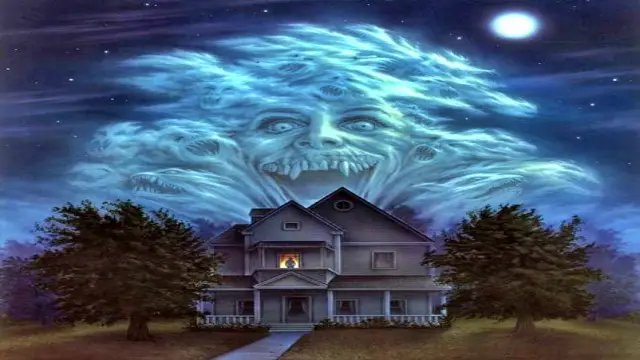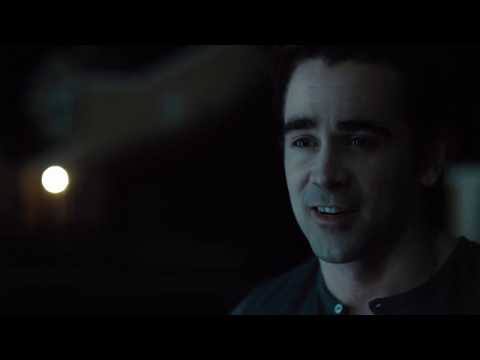Fright Night (1985): The Underrated Vampire Classic
If you’re a fan of vampire films, chances are you’ve heard of Fright Night (1985). This cult classic is one of the most beloved horror movies from the 1980s. It’s not just about blood-sucking monsters; it’s also a story of friendship, bravery, and growing up. For many, Fright Night was their first introduction to the world of horror—and for good reason. With its clever mix of scares and humor, it remains a timeless gem.
But what made this film so special? And how does its 2011 remake stack up against the original? Let’s dive in and explore why Fright Night continues to captivate audiences decades later.
The Original Fright Night: A Love Letter to Horror Fans
Directed by Tom Holland, Fright Night tells the story of Charlie Brewster, a nerdy teenager who discovers that his new neighbor, Jerry Dandridge, is a vampire. Played by William Ragsdale, Charlie tries to warn everyone—but no one believes him. His friends think he’s obsessed with horror movies, and even his mom dismisses his warnings.
Enter Peter Vincent, played by the legendary Roddy McDowall. Vincent is a washed-up actor known for playing vampire hunters in cheesy old films. When Charlie begs for his help, Vincent reluctantly agrees—only to realize that vampires are real. Together, they face off against Dandridge, a suave yet sinister villain portrayed perfectly by Chris Sarandon.
What sets Fright Night apart is its balance of horror and humor. The practical effects, though low-budget, were groundbreaking at the time. From the werewolf transformation to Amy’s haunting vampire makeup, these visuals still hold up today. Plus, the chemistry between the characters makes the film feel relatable and fun.
Why Fright Night Resonates with Fans
For many viewers, Fright Night wasn’t just another scary movie—it was a rite of passage. Before watching it, some people avoided horror altogether, fearing nightmares. But Fright Night changed that. Its blend of thrills and laughs made horror accessible and enjoyable. As one fan recalls, “It taught me to have fun with horror movies.”
The film also tackled themes like friendship and trust. Charlie’s struggle to convince others mirrors real-life experiences of feeling misunderstood. Meanwhile, Peter Vincent’s arc shows the importance of stepping up when it matters most. These universal messages give Fright Night lasting appeal.
The 2011 Remake: A Fresh Take on a Classic
Fast forward to 2011, and Hollywood decided to revisit Fright Night. Directed by Craig Gillespie, the remake had big shoes to fill. While it stayed true to the core premise—a teenager battling a vampire neighbor—it introduced several changes. Here’s a breakdown of the key differences:
1. Bigger Budget, Better Effects
With a budget of $17 million (compared to the original’s $9 million), the remake featured sleeker visuals and CGI-heavy sequences. However, purists argue that the charm of the original lay in its practical effects. Still, the remake delivered impressive moments, like Collin Farrell’s menacing portrayal of Jerry Dandridge.
2. Updated Characters
- Charlie Brewster: Originally played by William Ragsdale, the role went to Anton Yelchin in the remake. Yelchin brought vulnerability and charm to the character, making him relatable to modern audiences.
- Peter Vincent: Gone was the aging TV host; instead, David Tennant played a flashy Las Vegas magician inspired by David Copperfield. His over-the-top personality added flair but lacked the nostalgia of McDowall’s performance.
- Amy Peterson: Imogen Poots took on the role, bringing a fresh take to the damsel-in-distress trope.
- Evil Ed: Christopher Mintz-Plasse stepped into Stephen Geoffreys’ iconic shoes. While Mintz-Plasse nailed the geeky vibe, he didn’t quite capture the wild energy of the original.
3. New Additions
One notable change was the inclusion of Toni Collette as Charlie’s mom and Sandra Vergara as Peter’s assistant, “Virgin.” These additions gave the remake more depth but sometimes felt unnecessary compared to the streamlined original.
Which Version Reigns Supreme?
Both versions have their merits. The original Fright Night shines for its nostalgic charm, practical effects, and heartfelt performances. It’s a product of its era, capturing the essence of 1980s horror while pushing creative boundaries.
On the other hand, the remake appeals to newer audiences with its polished visuals and updated storyline. Collin Farrell’s Jerry Dachridge stands out as a darker, more menacing villain, while David Tennant injects humor and charisma into Peter Vincent.
Ultimately, which version you prefer depends on your taste. If you love retro vibes and practical effects, stick with the original. If you enjoy modern twists and glossy production values, the remake might be more your style.
Why Fright Night Still Matters Today
Decades after its release, Fright Night remains relevant because it speaks to timeless fears and desires. At its heart, it’s a story about confronting evil—whether literal or metaphorical. Whether it’s Charlie facing his vampire neighbor or Peter rediscovering his courage, the characters remind us that bravery comes in many forms.
Moreover, Fright Night paved the way for future vampire films like The Lost Boys and Near Dark. Its influence can even be seen in TV shows like Buffy the Vampire Slayer, written by Marti Noxon, who penned the 2011 remake.
Final Thoughts: A Legacy That Lives On
Whether you’re revisiting the original Fright Night or checking out the remake, both films offer something unique. They celebrate the magic of horror while reminding us why we love it. So grab some popcorn, dim the lights, and immerse yourself in the world of vampire hunters, eerie transformations, and unforgettable scares.
From its humble beginnings in 1985 to its modern reboot, Fright Night proves that great stories never die—they just evolve.


![FRIGHT NIGHT [1985] - Official Trailer (HD) | Now on 4K Ultra HD](https://www.gsnsp.com/wp-content/cache/flying-press/PMRH0RIEjnc-hqdefault.jpg)
